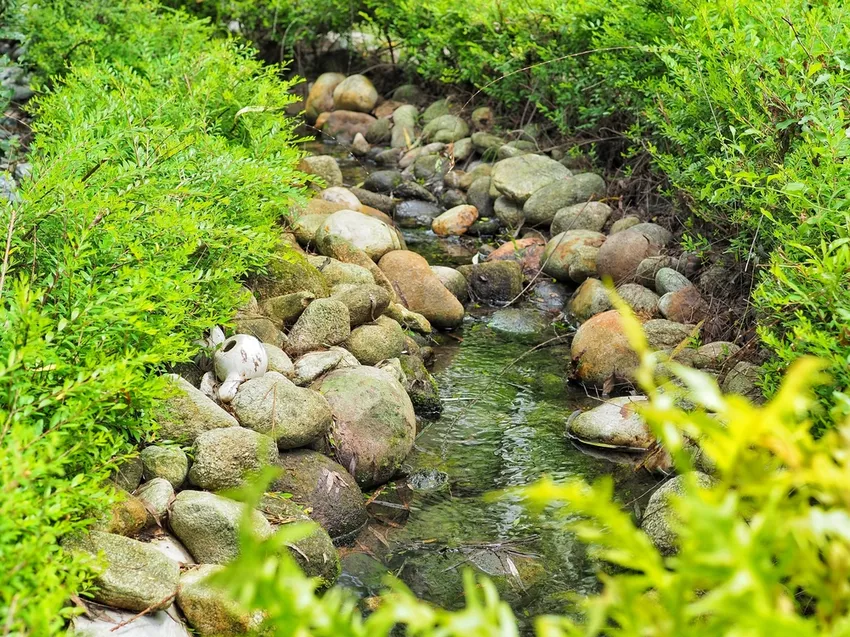A stream in your own garden can be easily installed with the help of pond liner or ready-made stream shells. On the other hand, if you have a specific image in mind, you can also make your dream come true with walled natural stones. These look very natural due to their appearance. In order for the natural stone stream to hold up, you should wall it up. Our instructions explain what you should pay particular attention to.
 Brick streams look natural
Brick streams look natural
Excavate and concrete the creek
Before you start building your stream, you first need precise planning, including a sketch and a calculation of the tools and materials required. The budget is also not insignificant, after all the materials required for a brick stream are quite expensive. This is especially true for natural stones, for which you need a lot depending on the length and width of the planned stream. However, the costs can be reduced if you use field stones you have collected yourself or artificial stones (e.g. made of concrete). Once the plan is in place, it will be built as follows:
- Create a slope if necessary.
- At the deepest point, dig a pit for the collection tank or pond.
- Mark the planned course of the stream.
- Dig out the creek.
- Remove stones and roots.
- Fill in a layer of sand/gravel, about two to four inches.
- Tamp them down well.
- Model the stream in concrete.
- Press the natural stones into the still wet concrete.
- If necessary, create a raised edge with the stones.
- Allow the structure to dry thoroughly and harden.
seal off the stream
Here, however, the work is far from over, because concrete is not naturally waterproof and must therefore be sealed. There are various options for this, although you should avoid laying pond liner or applying liquid pond liner for optical reasons. Instead, apply clear caulking materials such as epoxy or mix the cement with caulking powder. Then attach the collection tank and pump and lay the water hose. Atmospheric planting along the banks of the stream completes the picture.
tips
If you choose a reservoir instead of a pond, you should sunk it into the ground and provide it with an overflow. Overflowing water can be drained from the pool into another ditch or another part of the garden.